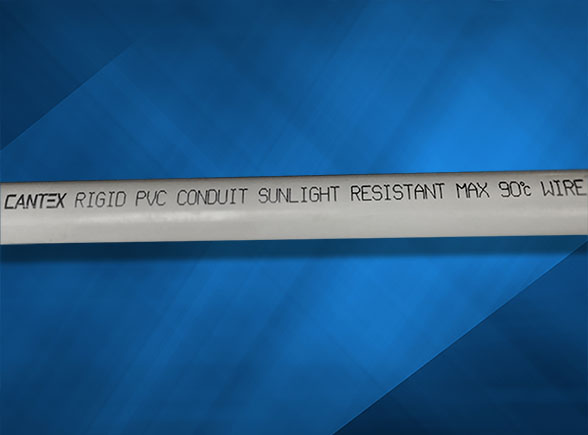IN THE NEWS: Is Imported PVC Conduit Compliant?

March, 2024
CANTEX President Dave Merker was recently quoted in TED Magazine on the subject of non-compliant imported PVC Conduit.
Excerpt from TED Magazine:
As globalization of products continues to rise, several companies have begun importing PVC conduit with aggressive attempts to attract potential new customers, while claiming their products are direct equivalents to domestic PVC conduit. But are these imports truly equivalent and are they compliant?
Our industry has discovered that the term ‘equivalent’ does not apply to all PVC, depending on the type of conduit specified. Customers certainly want to start with UL 651 certification on PVC conduit, which ensures a 75°C temperature rating. However, many specifications require a maximum 90°C rating to accommodate conductors at a higher temperature and avoid having the system derated.
That’s where the definition of ‘equivalent’ conduit differs. 90°C rated conduit must pass additional testing requirements before it can be certified. Outlined within UL 651, this stringent testing is held over a period of 360 days to ensure the PVC conduit withstands continuous exposure to a wide variety of environmental conditions, including high temperatures, without significant degradation of physical properties.
However, test certification is not all that is required. All listing agencies such as UL, ETL, and NSF require permanent markings on the product that displays “maximum 90°C wire” or “max 90°C wire”. If the conduit is not printed with this marking, then the product is non-compliant to the certification.
Most of the leading manufacturers of PVC conduit have undergone the long-term testing for their schedule 40 and schedule 80 conduit, and attained the 90° C rated certification and have the appropriate markings on their products.
However, to date, the required 90°C marking has not been found on certain imported PVC conduit products. This means domestic conduit rated and marked 90°C and unmarked imported PVC conduit may NOT be equivalent. Imported PVC conduit used in systems specified to 90°C that do not have the required markings are non-compliant – putting the entire system, contractor, and even distributor at risk.
As inspectors become aware of the use of this non-compliant conduit for 90°C conductors, the entire system could be rejected and required to be replaced with conforming product. This could expose contractors and distributors to significant liability for replacement of already installed product and/or other costs related to delays and damages, as well as responsibility for any safety issues that arise from products that did not meet the required specifications.
“Distributors and contractors need to be cognizant of any conduit that is not marked maximum 90°C wire or max 90°C wire. Unfortunately, there are companies today selling PVC pipe for electrical systems requiring 90°C, which does not meet the requirements of the specifications. This oversight could cost contractors and distributors a great deal more money than they think they are saving when it results in liability, damage, delays or the need to reinstall 90°C rated conduit,” said Dave Merker, President of CANTEX.
With options of choosing domestic or imported PVC conduit, it’s important to know which conduit to choose for 90°C specification. While everyone may claim they offer ‘equivalent’ conduit – only a careful visual check for the “maximum 90°C wire” or “max 90°C wire”, will give you peace of mind that you have the compliant product for your system.
For additional information on the 90°C certification, please reference the following codes and standards:
- NFPA 70 Section 352.10, National Electrical Code® (NEC®)
- UL 651 Sections 1.2.3b, 6.15, 8.2.1
- Your local Authority Having Jurisdiction (AHJ)
Read the full article in TED Magazine here: